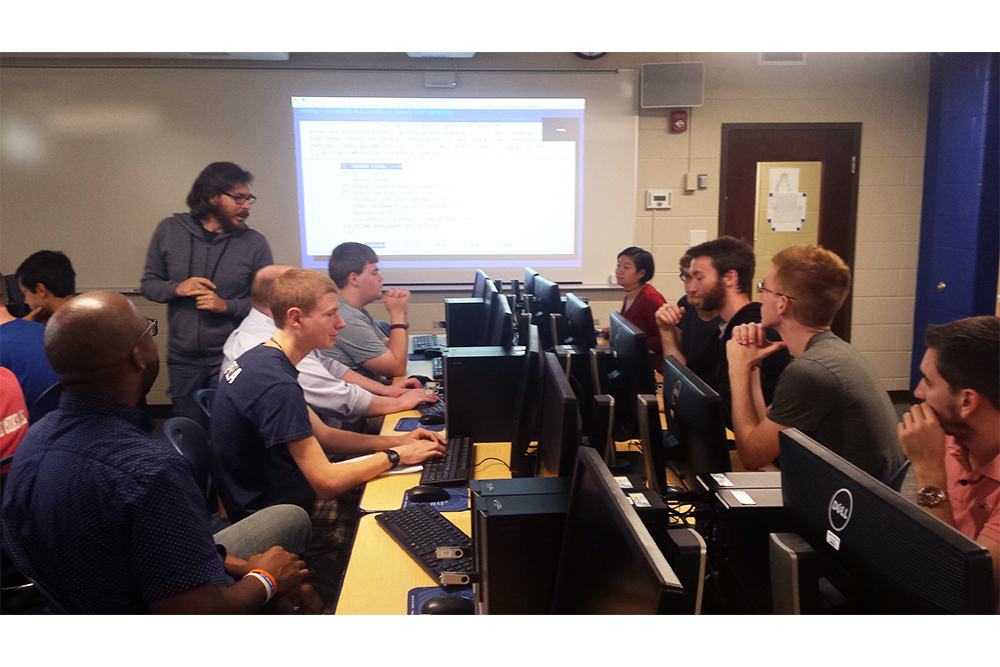Eastern Mennonite University students curious about one of the most advanced computer operating systems had a unique opportunity recently: a practical workshop with presentations by experts in Linux.
Open to students, staff and “anybody curious to see what’s under the hood of one of the most advanced operating systems,” the August 26 event in the Suter Science Center offered participants hands-on practice, installation media and “a ton of help and support,” said computer science and engineering Professor Stefano Colafranceschi, who organized the event.
“Although the Unix heritage is important and the key of several modern systems, young students are not much aware of it,” Colafranceschi said. “The Linux operating system is the key of many modern technologies and systems, but it’s also an inspiring story of a very large and complex project accomplished ‘together’ for the human kind.”
Expert researchers with whom Colafranceschi has collaborated provided presentations via Zoom on topics including:
- “Segmentation FAULT! How to configure a Linux kernel” by Marco Randazzo of the Dalle Molle Institute for Artificial Intelligence;
- “Role of Linux in the quest for big data” by Giuseppe lo Presti, senior software engineer at CERN IT;
- “Linux for Science: Data Acquisition Systems (DAQ) and large analysis frameworks” by Vallary Bhopatkar of the Argonne National Laboratory; and
- “Advanced Bash scripting” by Stephen Butalla of the Florida Institute of Technology.
Based on the Unix platform, Linux was created in the early 1990s. Freely distributable, it is “authored and maintained by a group of several thousand (if not more) developers loosely collaborating across the Internet,” according to O’Reilly Media.

Linux is really the future of operating system mostly for people that understand coding but it will be nice to bridge the gap between a layman and a programmer by making it user-friendly.